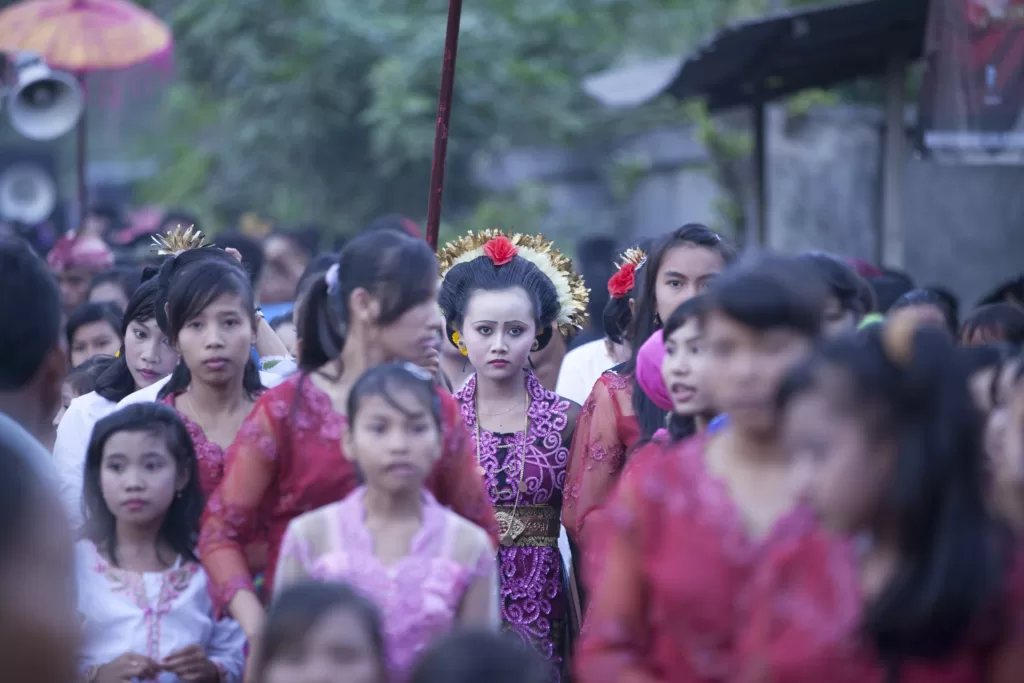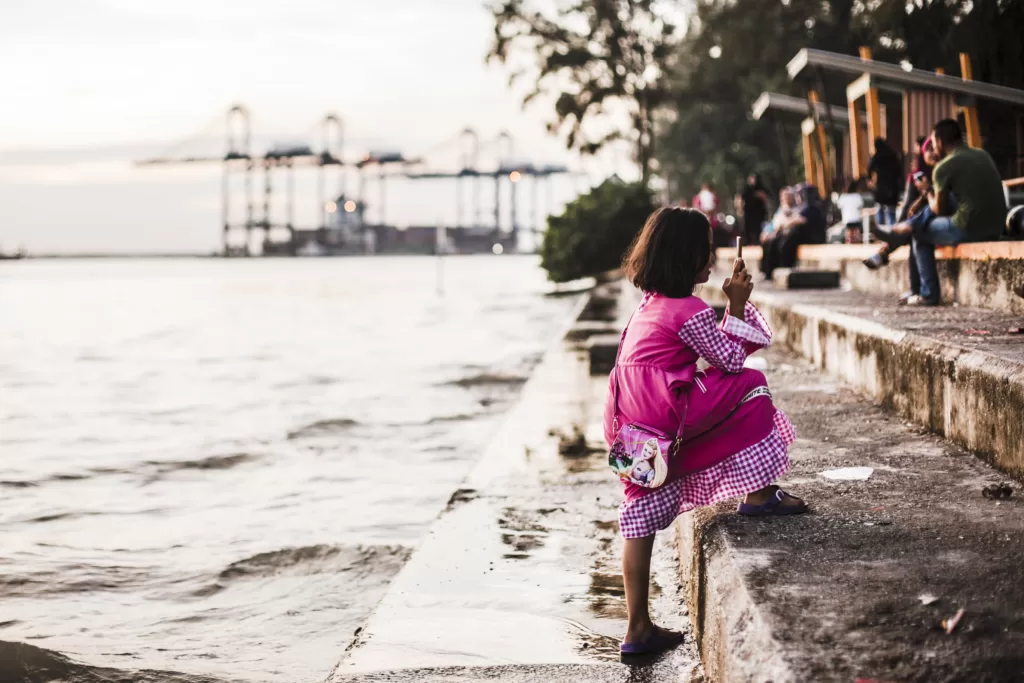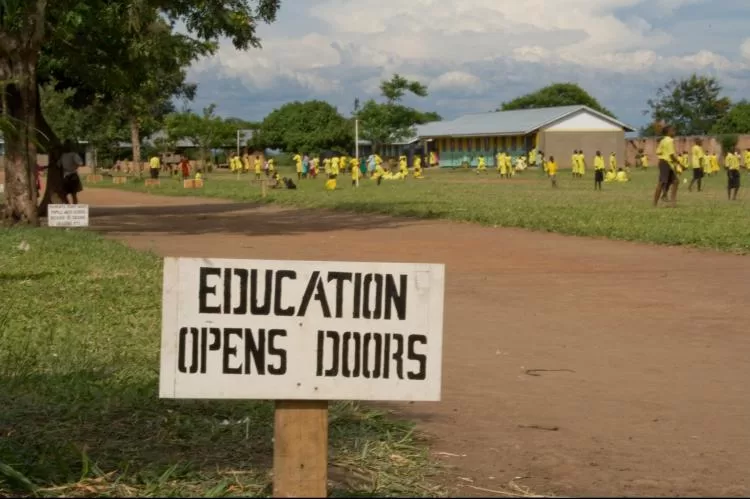Child marriage hit high levels in some Indonesian provinces during COVID-19. Families hold the key to ending it.
 Family is where the child marriage can stop : “The Child Marriage” by UN Photo/Armin Hariis available at https://bit.ly/40OA50Z CC by 2.0
Family is where the child marriage can stop : “The Child Marriage” by UN Photo/Armin Hariis available at https://bit.ly/40OA50Z CC by 2.0
Child marriage hit high levels in some Indonesian provinces during COVID-19. Families hold the key to ending it.
For Kiki Maharani, marrying young was the result of peer pressure in Madura, East Java. She married when she was 17 and her husband was 20 years old.
Kiki, now 28, blames lower levels of education and parents scared their grandchildren will be born out of wedlock for the prevalence of this practice. Indeed, many parts of Indonesia have similar traditions, which is why the country has the second highest incidence of underage marriage in Southeast Asia.
Girls who marry underage are denied an education and are prone to domestic violence and poverty. The practice also has significant economic costs: in 2020, UNICEF Indonesia published data showing child marriage cost 1.7 percent of Indonesia’s GDP.
The legal age for marriage in Indonesia is 19 but couples wanting to marry younger can apply to religious courts for a marriage dispensation, which allows them to legally marry younger. Data shows the number of these dispensations is increasing, and in 10 Indonesian provinces, the average age of marriage is 18 for males and 15 for females.
Child marriage increased across the Asia Pacific region during the COVID-19 pandemic. Indonesia has the second highest rate of child marriage among ASEAN nations and seventh highest worldwide.
Underage marriage is particularly prevalent in East Java, which has the highest number of marriage dispensations. In 2022, there were 15,337 applicants for marriage under the age of consent. This contrasts with the rest of Indonesia, where the number of marriage dispensation decreased from 61,449 to 50,673 between 2021 and 2022.
One of the main reasons for religious dispensations being granted for underage marriages is pregnancy out of wedlock, with 34 percent being granted for this reason. Families see marriage as the easiest way to cover up the shame and dishonour surrounding pregnancies out of wedlock.
This is often supported by religious officials who grant dispensations, who believe that if the couples are not quickly married, they are likely to violate religious norms and commit adultery. This argument has become a common legal loophole, which in turn perpetuates the increase in underage marriages.
The solution to the issue starts in the family home.
Parents often use the excuse that early marriage is a way to ease the economic burden on their families. Low awareness of the law and strong cultural traditions also mean underage marriage is not seen as a problem, but a solution.
Data developed by Susenas (2015-2022) shows those who married young were less likely to have graduated from elementary school. The numbers were even lower for junior high school and senior high school. Only a little over one percent of those married underage had graduated from college.
In 2012, 5.4 percent of Indonesian women between 20-24 years reported they were married prior to turning 18, and two percent reported they were married by 15.
The research suggests high levels of child marriage contribute to poverty in certain areas with a lack of access to healthcare and education making it difficult to achieve improvements in living standards. High rates of maternal and infant mortality, poverty and poor employment options are some of the problems still prevalent in many areas.
In an attempt to address the high levels of child marriage, East Java launched the Family Planning and Population Development Program (KKBPK) in 2015 to try to promote family resilience and welfare, with attention to gender equality, female empowerment and the protection and development of children.
In Malang, the high divorce rate is closely linked to the high number of child marriages, especially among migrant workers. In response, family development programs to achieve resilience and welfare have been implemented. Another regency in East Java, Pacitan, is working to address child marriage with the head of regency urging all agencies to work to decrease the number of child marriages in their area. These programmes have gone some way to lowering poverty although the number of poor people is still high.
Family is central to any effort to curb child marriage. Strengthening the welfare and resilience of communities begins at the family level. Family units play an important role in building or driving a change in mindset, attitudes and behaviour of the community. When communities are responsive to family development, this awareness can expand to other perspectives such as human rights, gender equality, empowerment and protection of women and the fulfilment of rights and protection of children.
Pinky Saptandari is a lecturer in Anthropology Department of Social Science Faculty University of Airlangga (UNAIR), East Java, Indonesia. Her research interests are in Anthropology of Health and Anthropology of Gender and Feminism. She is the director of the African Study Centre in UNAIR. She declares she has no conflict of interest and did not receive specific funds.
Originally published under Creative Commons by 360info™.
Editors Note: In the story “Child marriage” sent at: 03/04/2023 12:12.
This is a corrected repeat.










